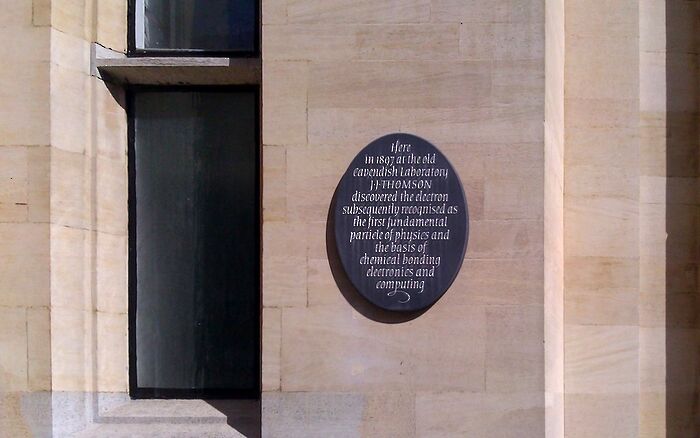What’s the nanotech revolution?
Charlotte Zemmel finds out what Girton fellow Dr. Colm Durkan’s latest book is all about

Nanotechnology is in every part of our lives. From particulates in sun cream to UV radiation, to transistors the size of a few atoms that make up your phone, laptop and Google’s new quantum computer, nanoparticles are a big deal. But what is nanotechnology all about?
Dr. Colm Durkan’s new book is here to explain. Not only is it a comprehensive history of the development of nanotechnology (starting at 4 BCE), but also a beginner’s guide to quantum mechanics and atomic theory. He aims to “separate the hype from the non-science” while detailing humanity’s ‘nanotech’ revolution. He wants his readers, from all ages and levels of expertise, to realise that ‘this is a way of thinking’, and there is “creativity going into nanoscience”.
When talking about nanotechnology, there really is no one better to listen to than Durkan. A fellow of Girton College, Durkan heads the scanning probe microscopy and nanoelectronics group at the Engineering department’s nanoscience centre. I was lucky enough this week to hear him at his Waterstones’ book launch in conversation with Luke Robert Mason, the director of ‘’Virtual Futures’’. The conversation that followed ranged from the possibility of ‘labs on a chip’ to the impossibility of tiny self replicating deadly nanobots, and the puzzle that quantum theory remains to be.
Nanoscience encapsulates any discipline that deals with length scales of up to 100 nm.
A nanometer is a billionth of a meter, and the atomic spacing in any material ranges on the order of 3-5 nm. Durkan explains that on this range, materials can be altered according to their quantum properties. The physical macro properties are a manifestation of their quantum properties and so the advantage of working at this level is that all physical attributes of a material can be made-to-order by nanoscale manipulation. Strength, colour, hardness, reactivity, malleability and conductivity are all adjustable variables on this scale, making the possibility of new material development endless. As Dr. Durkan put it, “at the nanoscale, we can just do more”.
Mason kicked things off by asking Durkan what got him so interested in nanotech. While studying physics at Trinity College Dublin, Durkan came across the iconic photo of the IBM logo written out in individual atoms. He was fascinated by the endless possibilities in technology brought about by manipulating materials on the atomic scale. One great example of the supermaterials created as a result of nanomanipulation is graphene, the carbon allotrope that is the world’s strongest and most conductive material. The applications of graphene include lightweight strength coating on aircraft, or heat sinks in electronics. Andre Geim and Konstantin Novoselov won the 2010 Nobel Prize in physics for the discovery of graphene, bringing nanoscience to the focus of cutting edge research.
Durkan is deeply fascinated by nanoscience’s potential for revolutionising medical diagnosis and treatment. He discussed chemotherapy created out of protein nanoparticles that bind to cancer cells and destroys them one at a time. Such treatments are under clinical testing as we speak.
The idea of a ‘lab on a chip’ also took up much of the discussion between the two science enthusiasts. When asked by Mason to explain how this would work, Durkan describes an incredibly simple device that could run 30 different blood tests simultaneously and instantly. A small chip with grooves can be constructed to fit into a handheld device operated by the doctor. A blood sample coats the grooves which each have a different nanosensor embedded inside, and the results can be printed on the device within moments. No more extraction of vials of blood that have to be sent off while the patient has to wait for weeks to send out their results! It is breakthroughs like this that make Durkan exclaim that “nanotechnology is underpinning science”.
He wants to bridge the gap between superficial knowledge and a detailed understanding of nanophysics. Too often the media fail to give people the potential to understand, by “treating people like idiots”. In an age of increasing technological innovation where some unqualified practitioners can feel isolated from the advancing world around them, it is refreshing to know that top researchers are conscientious about those they may be leaving behind. Durkan and Mason’s commitment to science communication and education is a much needed contribution to today’s scientific community.
Durkan is passionate about getting as many people as possible excited about the endless possibilities in nanotechnology, making his new book engaging and packed full of tiny things that could change the world. It will be a welcome contribution to an aspiring engineer’s popular science collection, or indeed an insightful documentation of this growing field for the experienced physicist.
 Comment / Cambridge students are too opinionated 21 April 2025
Comment / Cambridge students are too opinionated 21 April 2025 Interviews / Meet the Chaplain who’s working to make Cambridge a university of sanctuary for refugees20 April 2025
Interviews / Meet the Chaplain who’s working to make Cambridge a university of sanctuary for refugees20 April 2025 Comment / Cambridge’s tourism risks commodifying students18 April 2025
Comment / Cambridge’s tourism risks commodifying students18 April 2025 News / News in brief: campaigning and drinking20 April 2025
News / News in brief: campaigning and drinking20 April 2025 Comment / Does the AI revolution render coursework obsolete?23 April 2025
Comment / Does the AI revolution render coursework obsolete?23 April 2025






